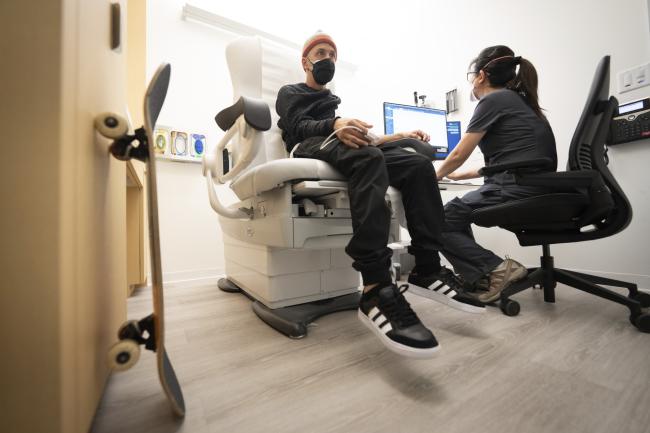Personalized deep brain stimulation for Parkinson's disease
September 10, 2024
Personalized deep brain stimulation for Parkinson's disease
At a Glance
- A personalized, adaptive system significantly reduced Parkinson's symptoms and improved quality of life compared with standard deep brain stimulation.
- Results from the small study will need to be confirmed in larger groups.

In Parkinson's disease, the brain cells that produce dopamine slowly die off. This can lead to a range of symptoms, most notably movement problems. People with Parkinson's can experience tremors, stiffness in the limbs, slow or involuntary movements, and problems with balance and coordination.
A treatment called deep brain stimulation (DBS) is used to help some people manage the motor symptoms of Parkinson's disease. In DBS, fine wires called electrodes are implanted into the brain at specific locations. These wires then deliver electrical signals that can lessen bothersome movement problems.
Conventional DBS provides a constant level of stimulation to the brain. It doesn't adapt to natural fluctuations in brain activity. It also can't account for changes in levels of medications in the body that people with Parkinson's may take to boost their dopamine levels. This can lead to unwanted movement effects.
A research team led by Drs. Simon Little and Philip Starr from the University of California, San Francisco has been developing a technique called adaptive DBS (aDBS). In aDBS, a machine learning system constantly measures changes in brain activity related to movement and adjusts the stimulation, in real time. The system measures activity in areas of the brain called the subthalamic nucleus and sensorimotor cortex. Measuring activity in these areas, the team found, could predict bothersome motor symptoms. The system then uses this information to change stimulation levels to prevent the symptoms.
In a new study, funded in part by NIH's BRAIN Initiative, the team tested their system in four volunteers whose Parkinson's symptoms hadn't been adequately controlled with conventional DBS. The systems could deliver either conventional DBS or personalized aDBS. Over a period of one month, participants were randomly switched between conventional DBS and aDBS for blocks of several days at a time. The participants weren't told which type of stimulation they were receiving at any time. Results were published on August 19, 2024, in Nature Medicine.
On average, the participants experienced a significant reduction in the time they experienced their most bothersome symptom during aDBS compared with conventional DBS. They also reported increased quality of life during the aDBS sessions.
None of the participants experienced unwanted side effects from the aDBS treatment. The personalized programs also didn't increase depression, anxiety, or other mental health symptoms, and didn't negatively affect sleep.
€œThis study marks a big step forward towards developing a DBS system that adapts to what the individual patient needs at a given time,€ says Dr. Megan Frankowski, a program director with the BRAIN Initiative.
More work is needed to make the personalized system easier to program, implant, and adjust after implantation, to make it more accessible. The aDBS system also needs to be tested in larger, more diverse populations of people with Parkinson's disease.
References
Chronic adaptive deep brain stimulation versus conventional stimulation in Parkinson's disease: a blinded randomized feasibility trial. Oehrn CR, Cernera S, Hammer LH, Shcherbakova M, Yao J, Hahn A, Wang S, Ostrem JL, Little S, Starr PA. Nat Med. 2024 Aug 19. doi: 10.1038/s41591-024-03196-z. Online ahead of print. PMID: 39160351.
Funding
NIH's National Institute of Neurological Disorders and Stroke (NINDS) and Brain Research Through Advancing Innovative Neurotechnologies (BRAIN) Initiative®; Thiemann Foundation; TUYF Charitable Trust Fund.


